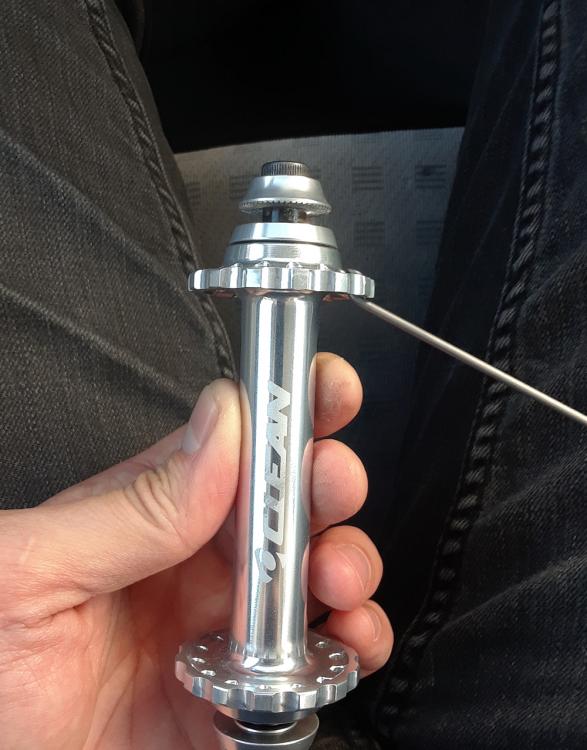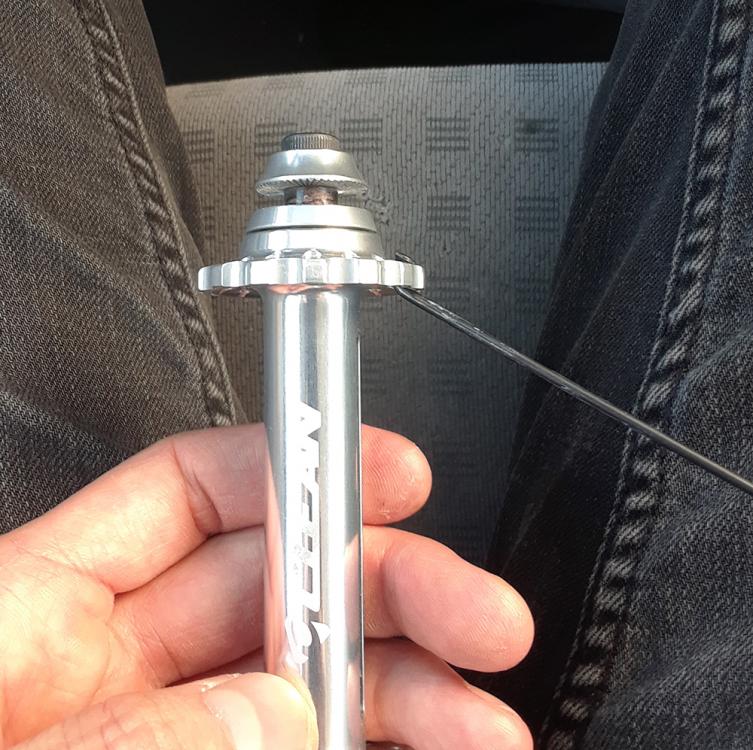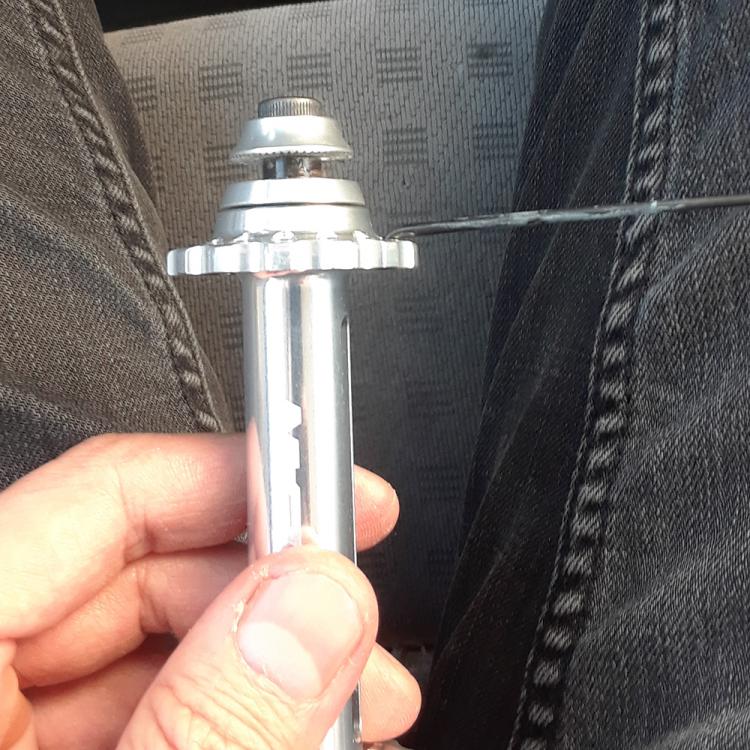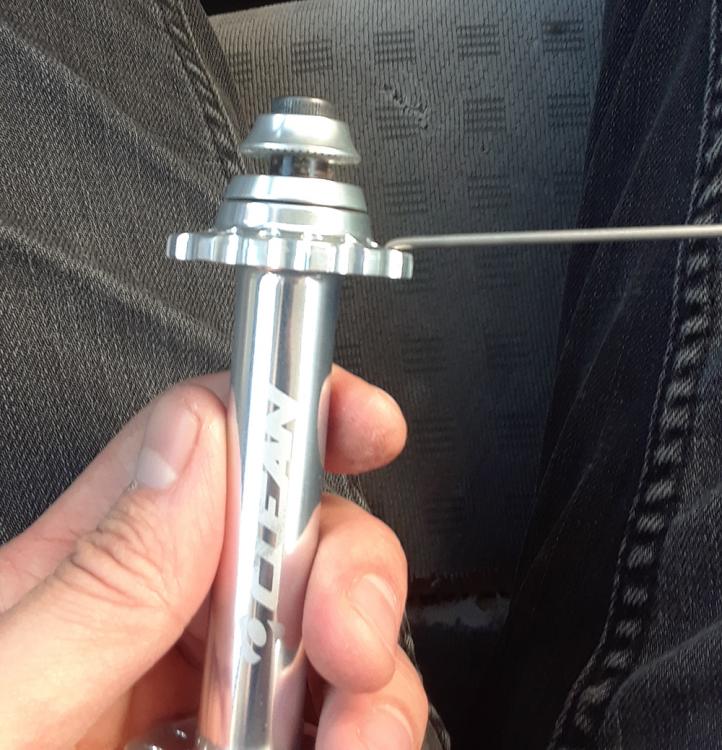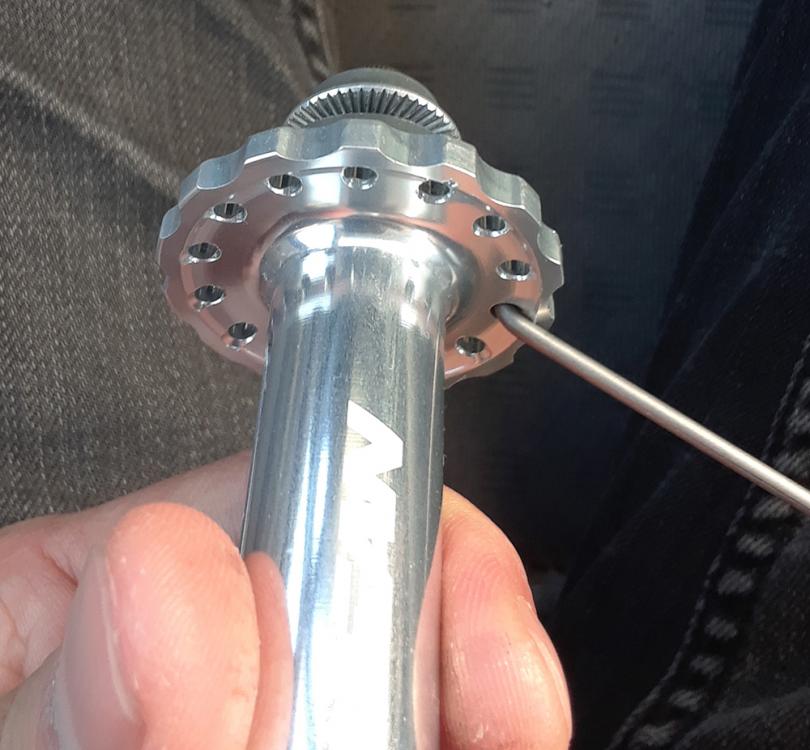
Mr_Orange
Members-
Posts
27 -
Joined
-
Last visited
Content Type
Profiles
Forums
Gallery
Everything posted by Mr_Orange
-
Do trial riders like a longer reach for Enduro and DH bikes?
Mr_Orange replied to Mr_Orange's topic in Beginners Trials Chat
I realize this could be misleading so i should reiterate that I'm talking about the handle bar positioning of a 24" street trial bike like an Inspired. Not something like a mod with a 180mm stem. So a subtle difference of 1 inch more reach than a DH bike. Not 2-3 inches. Bmx riders of the same height use anywhere from a 20.4tt to 21.5 tt and now people move their bars forward too. Having never been downhill riding before, i was speculating that factors like pedaling in a seated position and riding for a long sustained period of time might dictate your ideal reach. -
Do trial riders like a longer reach for Enduro and DH bikes?
Mr_Orange replied to Mr_Orange's topic in Beginners Trials Chat
no one's going to delete these duplicates? -
Do trial riders like a longer reach for Enduro and DH bikes?
Mr_Orange replied to Mr_Orange's topic in Beginners Trials Chat
Not sure what just happened. This thing reposted a bunch of times. -
I'm trying to figuire out the right frame/stem/bar size for my first DH bike. Never tried a DH bike before but i remember a while back blocking out reach measurements in a CAD program and noticing that DH and enduro bikes are closer in a bar position to a bmx bike. More cramped. I've gotten comfortable with a bar position similar to a Inspired street trials bike which is something like an inch or two further forward and taller than a bmx. Does anyone here (i guess more specifically the street trial riders. Can't imagine anyone riding MTB with a super long reach comp trials position) try to match their mountain bike bar position with their street trials bike?
-
I'm trying to figuire out the right frame/stem/bar size for my first DH bike. Never tried a DH bike before but i remember a while back blocking out reach measurements in a CAD program and noticing that DH and enduro bikes are closer in a bar position to a bmx bike. More cramped. I've gotten comfortable with a bar position similar to a Inspired street trials bike which is something like an inch or two further forward and taller than a bmx. Does anyone here (i guess more specifically the street trial riders. Can't imagine anyone riding MTB with a super long reach comp trials position) try to match their mountain bike bar position with their street trials bike?
-
I'm trying to figuire out the right frame/stem/bar size for my first DH bike. Never tried a DH bike before but i remember a while back blocking out reach measurements in a CAD program and noticing that DH and enduro bikes are closer in a bar position to a bmx bike. More cramped. I've gotten comfortable with a bar position similar to a Inspired street trials bike which is something like an inch or two further forward and taller than a bmx. Does anyone here (i guess more specifically the street trial riders. Can't imagine anyone riding MTB with a super long reach comp trials position) try to match their mountain bike bar position with their street trials bike?
-
I'm trying to figuire out the right frame/stem/bar size for my first DH bike. Never tried a DH bike before but i remember a while back blocking out reach measurements in a CAD program and noticing that DH and enduro bikes are closer in a bar position to a bmx bike. More cramped. I've gotten comfortable with a bar position similar to a Inspired street trials bike which is something like an inch or two further forward and taller than a bmx. Does anyone here (i guess more specifically the street trial riders. Can't imagine anyone riding MTB with a super long reach comp trials position) try to match their mountain bike bar position with their street trials bike?
-
I realized what was really wrong. I've been following this one old instructional video on wheel building which tells you to get half the spokes in first and then grab the hub and rotate it clockwise so that all the spokes get into that final rotated position. This was how i built all my wheels. When i tried this step with this hub, it wouldn't rotate at all. It was just stuck. The thing with this Clean hub is you have to set the first half of the spokes into their final rotated position right from the beginning. It's actually ideal because there's a sweet spot there where you're not putting any pressure on the spoke elbow, and it kinda just sits in that already rotated position on it's own.
-
I've always used 3-cross. I thought radial wasn't even an option if you want a strong wheel. you, i've seen the spoke indentations around a hub hole from a used hub after removing the spokes so i figured the hub itself can take that abuse. I guess i was more worried about scraping away a decent chunk from the armpit/elbow of the spoke bend when forcing the spoke through. I think i'm just going to go for it.
-
I'm trying to lace a Clean HS Front Hub 100mm. This one: http://cleantrials.com/en/hubs/37-hs-front-hub-100mm.html#.W8-4ZSMrJz9 When putting the spokes through from the outside to inside, the spokes elbow and the hub flange shape don't seem to be pairing up well. This picture shows the furthest this spoke is going in. Notice it's almost at 45 degrees. This is where it's stuck. It's not so much of an issue from the other direction (inside to outside). See how the spoke is much closer to being parallel with the flange. This is how it usually is suppose to be on all the other wheels i've built. I thought maybe it was my specific spoke at first (usa titanium) but then i tested it with a Sapim Laser spoke and it was the same as you can see here. Even getting it to that 45 degree spot took a little bit of wiggling. I did not try using excessive force to try to yank it into place yet. I'm worried this might mess up the spoke or the hub. I think if i yanked it hard with some pliers it might actually fully seat. Maybe i should just do this but with an older/used full set of spokes, tighten it up, skip the truing process, and just use this as a means of pre-stressing the hub without damaging the new spokes. You can see that this circular "ditch" on the inside of the flange is for sure contributing to this. Seems like you'd need a spoke with a bigger elbow to clear this. Is that my problem here? Or is there some kind of spoke building technique that only involves feeding the spokes from the inside to outside (the less problematic direction) that i don't know about? I did also leave these spokes in my car (in a plastic box though) for about a month. I wonder if spokes shrink with heat.
-
Which carbon fork is the strongest? Crewkerz? Monty?
Mr_Orange replied to Mr_Orange's topic in Trials Chat
got the consensus i was looking for. thanks! -
Which carbon fork is the strongest? Crewkerz? Monty?
Mr_Orange replied to Mr_Orange's topic in Trials Chat
thanks for the feedback. Do you retire carbon forks (or parts in general) after a certain amount of time? I'm about to put together a mountain bike soon too so i've been wondering what's the current deal with carbon fiber tech in general these days. I guess people who are serious about these sports tend to have something totally new after a couple of years anyways. But what if say you bash/dropped a carbon fiber part against a rock or ledge early on? Are people just rolling the dice on these things or are there new recent developments in cf that have redefined this material? -
I'm looking at 20" carbon forks and I'm wondering which one is considered the strongest one out there? Here's 2 i've been checkin out that have unique properties: Crewkerz. This one works with a through-axle hub. Does this improve the overall fork strength? https://www.trial-bikes.com/en/crewkerz-tapered-20-carbon-fork-p-538108.html Monty. This one is the heaviest CF fork so i'd assume the extra material is going to make it stronger. https://www.trial-bikes.com/en/monty-m5-carbon-tapered-20-fork-p-537843.html Any other ones out there considered to be strong?
-
When to measure spoke tension? Before or after inflation?
Mr_Orange replied to Mr_Orange's topic in Beginners Trials Chat
I you, i was thinking it's got to be something with this particular type of rim design. I wonder if this is a good or bad thing for the strength of the rim that tire pressure increase tension. Tension does seem to be the same throughout still. I'll stick with this for a few days and see if the noise goes away. Hopefully the ti would hold up for a bit. I usually only break spokes in the back, and I don't ride as hard as matt coplon or even some people with full ti wheels. -
So i looked this up and most people say spoke tension should decrease after inflation because the tire pushes the spokes inward towards the hub and that you should get the rim to the right tension uninflated. Mines did the exact opposite. Spokes got tighter after wheel inflation. First time i built it, i tensioned it to 80kg (max recommended for my rim). Trued it and then got it all to equal tensioned. Stressed the spokes a bunch. Rode it a few times. Nothing crazy. Wheel seemed fine. Then, after noticing the tension was actually tighter (about 15kg tigher, a quarter turn per spoke) when inflated, I decided to loosen each spoke by a quarter notch until spokes were down to the recommended 80kg when inflated. Stressed the spokes some more after that and rode for a bit After doing this 180, the spokes started to make popping/creaking noises and kept doing so. This wasn't the case after the first ride session. So should i have kept it at the previous tighter setting where it was at 80kg uninflated? Here's the thing though... I built a weird wheel with half titanium spokes on the inside and half steel spokes on the outside. I saw this Matt Coplon bike check: http://www.vitalbmx.com/photos/member/Matt-Coplons-Custom-Bike,46040/Matt-Coplon-and-His-Custom-Bike,130541/Karl-Poynter,55711 I've since been told this was a dumb/pointless idea... Too late, already bought/built everything. Is this what cause the spokes to get tighter after inflation though..? This was my first wheel build with a truing stand. I medium tensioned it, then lateral true, dishing, radial true, tensioned it, and then stressed it. Here's my parts: - Hashtagg front rim: https://www.tartybikes.co.uk/20_inch_rims/hashtagg_front_20_inch/c26p13027.html - Jitsie race front hub - trialtech sport lite fork -Maxxis grifter tire Wheel seems fine other then the noise? Any suggestions?
-
Is your bmx frame a spanish bb or mid? Do you know if the echo isis bb fits bmx mid bb frames?
-
i might have to read a more thorough tutorial on wheel building before referring back to this thread. I didn't even know what stressing spokes is. My wheel build technique was pretty basic. I remember reading that you're supposed to grip the spokes with plastic pliers when you tighten the nipples. Do you start to check for twisting after you've gotten all the spokes pretty tight? Also, I'm going to re-build my rear wheel after i build this front one (without buying new spokes though). Does anyone ever undo all the nipples and reapply spoke prep to the threads? is that even necessary? Or should i just get all the spokes pretty loose and go from there?
-
I've never used a dishing tool but I'm familiar with side to side truing on a frame. So it sounds like you have to go back and forth with the truing stand and dishing tool to make sure the side to side adjustments don't mess up the roundness and vice versa. My truing stand is a cheap one (spin doctor ii) and i heard the built in roundness/dishing gauge on those is not good. Which is why i bought the dishing gauge.
-
I've built a 36h rim before with no measurement tools. Just trued it on my bike. Didn't come on so good though. Never was really that true or round. Now I've got a tension meter, dishing tool, and a truing stand and i'm building a 28h 3-cross pattern front wheel. 1) Is 3-cross on a 28 hole rim the same technique as on a 36h? Most tutorials show 32h or 36h for 20" wheels. 2) What is the proper tension value for this 28h wheel (i have a park tools tensionmeter)? I heard it also depends on the spoke type and rim (using USA double butted spokes: http://flatlandfuel.com/usadoublebuttedspokes1415g.aspx , and i have this rim: http://www.tartybikes.co.uk/20_inch_rims/hashtagg_front_20_inch/c26p13027.html) 3) What is the order in which i use the tools? I'm assuming first true it on the truing stand, then round it on dishing gauge, then tighten it to the right tension on the tensionmeter?
-
Bunnyhopping high. Twist left or twist right.
Mr_Orange replied to Mr_Orange's topic in Beginners Trials Chat
Been watching videos of Flipp and noticed he bunnyhops twisting frontside too: http://www.youtube.com/watch?v=llOEjpI0kL0&t=1m47s -
Bunnyhopping high. Twist left or twist right.
Mr_Orange replied to Mr_Orange's topic in Beginners Trials Chat
That does kinda make sense. I'm all over the place when it comes to spinning. When i snowboard, my natural spinning direction is to the right, but I'm much more comfortable doing grabs that twist to the left. On a skateboard, i can 180 to the left much better than i can in my natural direction. -
Bunnyhopping high. Twist left or twist right.
Mr_Orange replied to Mr_Orange's topic in Beginners Trials Chat
I thought the twist was more for getting really tucked without the seat or back tire hitting your ass. Your explanation makes sense too though. So you're saying it's likely that people are just rotating towards their more natural spinning direction during a bunnyhop which tends to be towards their back foot? My comfortable way of spinning 180's is clockwise, towards my back foot, so it's strange that my body wants to twist counterclockwise at the height of a bunnyhop. btw, found image comparisons of what i'm talking about. I look like the 1st guy. Most people look like the second guy: -
Working on bunnyhopping higher. I noticed for all high bunny hops, when fully tucked at the top, the rider drops their ass down low towards the back foot side of the frame. The bike is also twisted 45 degrees. Like this (look up bunnyhop contest videos, they're all like this): For high side hops though, it's the opposite. The rider drops below the frame on their front foot side. Side hop: Is there a reason for this? I ride left foot forward and when i try to bunnyhop high, my body naturally drops below the frame on the front foot side and the bike turns 45 degrees to the left. So, I tuck more like a side hop when i bunnyhop, almost like my body wants to face perfectly forward. I've never even worked on this too, it's just what my body wants to do. Is this bad technique? My hops are progressing but very slowly so I'm wondering if this is holding me back. I can kinda twist it the other way, but it just feels way more unnatural and harder.


